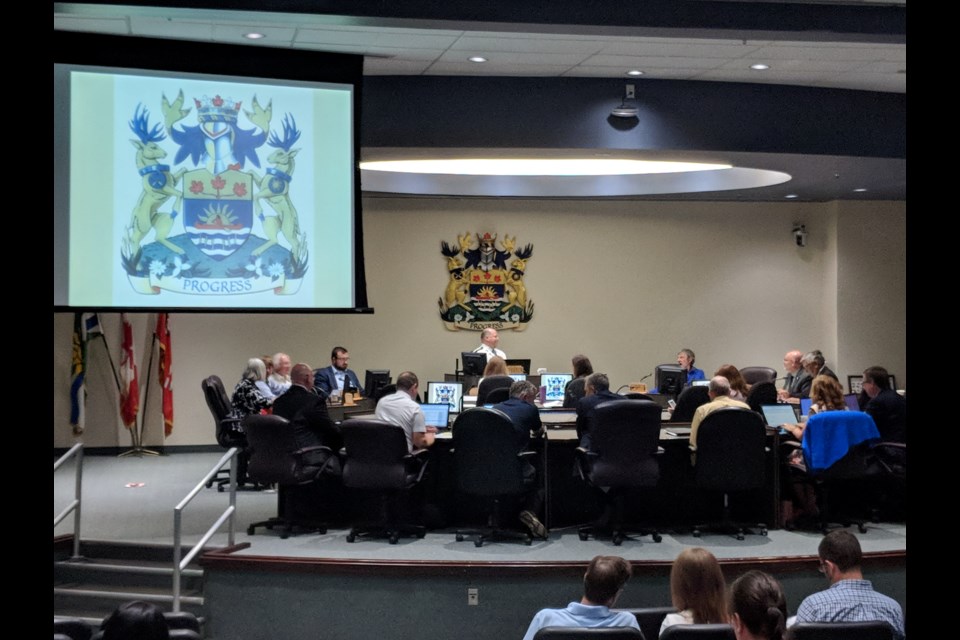City council is petitioning the provincial Ministry of Transportation (MTO) to erect cement barriers on the new West Street bridge to be constructed over Highway 11.
Last month, representatives from the MTO and its consultant updated city council about their plans for the new bridge that was to feature a multi-purpose “pedestrian-friendly” cycling and walking trail.
A few days later, the province hosted a public meeting to garner feedback about its proposed design.
“At this meeting, there was a strong voice for separated pedestrian and cycling facilities across this bridge rather than the combined multi-use trail the MTO had originally proposed,” Wes Cyr, the city’s manager of engineering and transportation, told council committee this week.
“The MTO design consultant took the comments into consideration and they provided three alternatives” for the city and Township of Severn to comment on.
City staff, Severn staff and the MTO all agree on the path forward: two at-grade bike lanes in each direction and one sidewalk on the north side.
“This alternative is preferred by MTO and Severn and will create a safer environment for cars, pedestrians and bicycles crossing the highway,” said Cyr.
However, Coun. Tim Lauer said the plan, while preferred over other options, doesn’t go far enough.
The long-time Ward 4 councillor noted the MTO has, in its latest preferred design, decided to reduce the width of the bridge to 14.3 metres after saying it could span up to 14.8 metres. A greater width would allow barriers between the pedestrian walkway and the vehicular traffic.
“We could put a barrier in there and not really stretch things out that much,” opined Lauer. “The reason is … we’re down to a two-metre walkway, we’re on a bridge (and) there’s nowhere to go but to jump off the bridge (if there’s a problem). I still think it’s a safety issue.”
Cyr said a barrier was considered but, ultimately, it was nixed due to concerns about snow removal.
Having the concrete barriers in place would provide challenges to remove snow on the bridge, said Andrew Schell, the city’s director of environmental services and operations.
“Unfortunately, when we looked at this, the actual challenge that we saw if you have a barrier, ultimately we would have to remove snow every time we have a snowfall,” said Schell, who noted in the past, the city has removed snow from the bridge (walkway) only on a weekly basis.
“The biggest challenge is, somehow we need to have some type of machine that would look after that two-metre (stretch) and clear it every time,” said Schell. “To us, it would be a significant challenge.”
That didn’t hold water for Lauer.
“I am talking about a barrier between the pedestrian walkway and the road,” said Lauer. “In my opinion, snow removal isn’t that significant” because by the time the bridge is constructed the trail network will be connecting to the new path over the bridge.
“I assume if you are doing a sidewalk or trail up to the bridge that same machine will go over the bridge and clear that pedestrian walkway in some way,” said Lauer.
“There will certainly be more maintenance required for the bike lanes, but that’s a given. If you’re going to offer that extra service, I believe there is an additional operating cost,” said Lauer.
“You’re just going to have to clean it off in some manner. It’s not a long bridge. What I’m talking about is simply to protect pedestrians from road traffic that could wander, hit ice … it’s not like a person can just jump on to a lawn or something ... you’re trapped on a bridge.”
Coun. Jay Fallis agreed.
“I think it’s a real necessary thing to add in terms of ensuring the safety of pedestrians,” said Fallis. “The more boundary we put up between vehicles and pedestrians the better.”
Ian Sugden, the city’s director of development services and engineering development services, warned councillors that elements added or changed could carry a price tag.
“There is no way of contemplating what cost of the bridge (will be borne by) the municipality,” noted Sugden. “Each thing we do has a potential to add costs. It’s not a scare tactic, it’s a reality.
“We don’t know what they are going to tell us if we have to pay for anything at all ... each design change has to be accommodated and that likely (means) an increased cost.”
In the end, council agreed to petition the ministry to ask them to install solid concrete barriers to separate the dedicated pedestrian walkway from vehicular traffic.
Cyr noted this is the kind of input the MTO wants to hear prior to developing its detailed design for the bridge.
It’s expected the environmental assessment and detailed design work will be completed in 2020, with construction of the new bridge slated to occur in 2021.
The bridge is about 50 years old and has been struck multiple times by south-bound traffic.
The structure is deteriorating more quickly than expected, which is why it’s being replaced.
